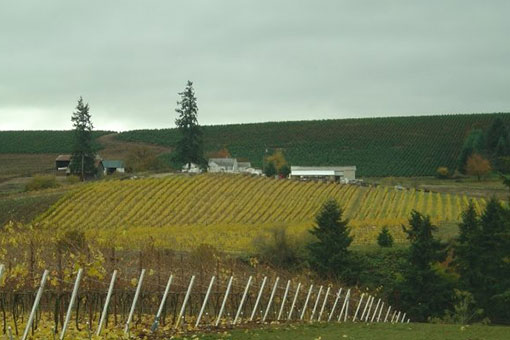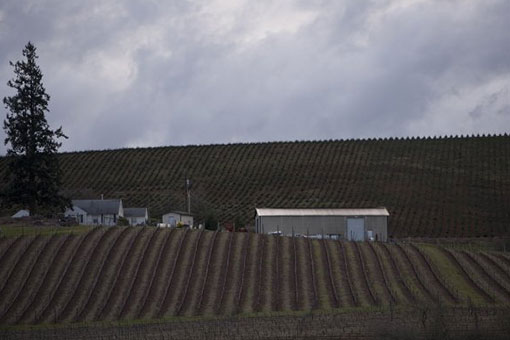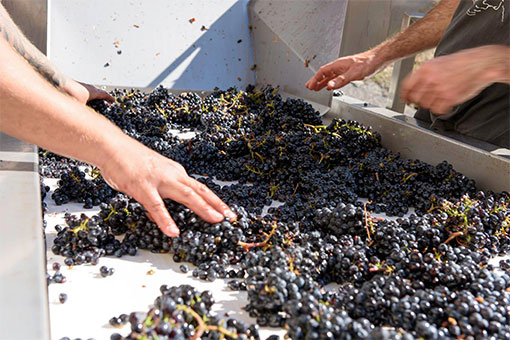Vineyard Practices
Our estate Wild Winds Vineyard, in the South Salem Hills of Oregon’s Willamette Valley, spreads across 19.4 gently rolling acres. We have eight blocks planted for a total of 8.2 acres with a few more acres left to plant.
The elevation ranges from about 500 feet at the bottom of the vineyard to about 570 feet at the top, near the winery building. The exposures vary but are mostly east and southeast with a bit of south. The soil is a well-drained silty clay loam called Jory that is what gives the Red Hills of Dundee their characteristic hue and is now the official Oregon State Soil. It’s got an underlying layer of fractured volcanic granitic basalt that gives us rocks called “erratics” that we keep uncovering every year. The rocks we keep running into range in size from a foot or so in diameter to the size of a Cooper Mini. Sometimes it seems if they’re trying to reach the surface to get a breath of fresh air.


A steeper-sided gully runs through the southwest corner of the vineyard, headed off to the creek at the southeast corner. Jackson Hill Road cuts across the gully, its roadbed filled more than 10 feet high with forced labor provided by jail inmates many years ago, so the story goes. Jackson Hill Road once was on a regular stage route to the south, and before the gully was filled, the owners of the old house across the road kept a team of horses to haul wagons and cars out of the mud where the road used to dip into the gully.
We haven’t planted grapes in the bottom of the gully because there’s just too much available water near the surface, although it’s only noticeably wet with runoff in late winter and early spring.
We use organic farming practices because each vineyard’s ecosystem is precious and unique. Not all the vineyards we purchase fruit from are certified organic, but we’re trying to get them all that way.
So we utilize:
Close spacing (1,800-2,100 per acre); vertical trellis; target 2 pounds of fruit per vine; shoot thinning; leaf-pulling in fruit zone; crop dropped when necessary; no pesticides, sustainable agriculture. Gophers humanely and gently chased, then harnessed to electricity-generation grid (Just kidding…).
We also grow a fair amount of vegetables and herbs near the top of the hill, and old heirloom-variety apples trees on some of the steeper slopes or folds that aren’t suitable for grapes.
We purchase fruit from several vineyards, which means I’m trying to learn every nuance of all those other vineyards each year. They have a few similarities, but they differ in some significant ways that make the fruit distinctly different from one another. All have a vertical trellis system. Where they vary most is in soil type, sun exposure, elevation and clonal selection.
Briefly (for pinot noir, anyway):
Wild Winds (estate) vineyard: Jory (volcanic) soil; mostly east, some south exposure; 450-530 feet elevation; Pommard, Wadenswil, Dijon 115 clones; vine age 4-22 years.
Walnut Ridge Vineyard: Volcanic and sedimentary soils; mostly south and west exposure; 450-600 feet elevation; Pommard, Dijon 115, Dijon 667; vine age 5-11 years.


